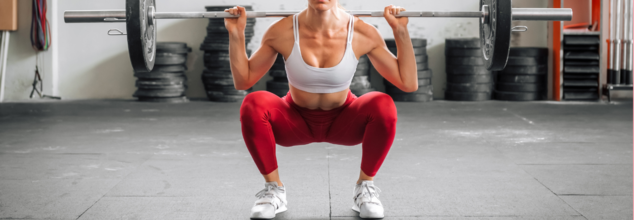
Image Credit: Canva
Stronger Thighs, Longer Life: Daily Exercises For Building Leg Strength
If you ever felt like skipping leg day, think again. Research increasingly points to leg strength as a key factor in longevity. Strengthening your thighs might be one of the best decisions you make for your long-term health. Studies have shown that lifting weights not only improves physical and mental well-being but can also contribute to a longer life.
A recent clinical trial published in BMJ Open Sport & Exercise Medicine revealed that a year of heavy resistance training during retirement preserved vital leg strength for years. Given that muscle depletion in the legs is a strong predictor of mortality in older adults, maintaining leg strength is essential for mobility, independence, and overall health.
How Leg Strength Impacts Your Health
Skeletal muscle mass naturally declines with age, often interfering with daily movement. Weak thighs can contribute to a sedentary lifestyle, leading to reduced balance, an increased risk of falls, and a decline in metabolic health. Resistance training, whether using body weight, free weights, or resistance bands, is a powerful way to counteract this decline and maintain functional strength.
Stronger thighs aren't for athletes only. For instance, in just getting up from a chair or going upstairs or even just walking, thigh muscles work the most in all everyday movement. Strength of the leg increases endurance and balance as well as the possibility of healthier cardiovascular function.
Why Stronger Thighs Mean a Longer Life
Your thighs are crucial for daily movement, stability, and overall strength. Strong legs lead to better mobility, reduced risk of falls, and improved metabolic health. Genetics play a role in muscle and fat distribution, but the best way to keep your legs strong is through targeted exercises and a diet rich in protein.
Skipping leg day is no longer an option if you’re serious about your long-term health.
Daily Exercises for Stronger Legs, Quads And Glutes
1. Squats
Squats are one of the best exercises to work the quadriceps, hamstrings, glutes, and core. They help increase lower-body endurance and mobility, making everyday movements easier and more efficient.
- Stand with feet slightly wider than hip-width apart.
- Lower your hips back and down, bending your knees until your thighs are parallel to the floor.
- Engage your core and press through your heels to return to standing.
- Do 2–3 sets of 8–12 reps.
2. Lunges
Lunges engage multiple muscle groups while also improving balance and coordination. As you progress, add dumbbells for increased resistance.
- Step forward with one leg, bending both knees at a 90-degree angle.
- Push off your front foot to return to the starting position.
- Alternate legs and repeat for 2–3 sets of 8–12 reps.
3. Romanian Deadlifts
The Romanian deadlift works well on the posterior chain, which includes the hamstrings, glutes, and lower back.
- Take a dumbbell in each hand and stand with feet hip-width apart.
- Hinge at the hips, bending your knees slightly, and lower the weights to mid-shin.
- Return to standing using your hamstrings and glutes.
- Do 2–3 sets of 8–12 reps.
4. Lateral Lunges
Lateral lunges engage the inner and outer thighs to enhance agility and side-to-side movement.
- Step out far to one side with one foot and bend that knee, with the other leg straight.
- From there, use the bent leg to push yourself back to standing.
- Do 2–3 sets of 8–12 reps per leg.
5. Bulgarian Split Squats
This advanced single-leg exercise enhances balance, mobility, and unilateral strength.
- Stand back from a bench two feet away, and position one foot back.
- Lower down until your front knee reaches the 90-degree angle.
- Use the front heel to push to return to the top.
- Do 2-3 sets with 8-12 reps in each leg.
Tips to Maximizing Your Leg Exercises for Long Life
Mix Up
In order not to reach a plateau, use different kinds of leg exercises, such as resistance training, running, and high-intensity movements. Add incline walks or stair climbing to increase the involvement of your thighs.
Cross-Train
Combining strength training with swimming, cycling, or playing sports can improve leg endurance and power. Basketball, soccer, and hiking are great ways to challenge and strengthen your lower body in different ways.
Resistance Training
Resistance training is supported by research as a way to preserve muscle mass and function, especially as we age. Free weights, resistance bands, or even bodyweight exercises like squats and lunges are essential for maintaining strong, functional legs.
Heavy resistance training at retirement age induces 4-year lasting beneficial effects in muscle strength: a long-term follow-up of an RCT. BMJ Open Sport & Exercise Medicine. 2024
© 2024 Bennett, Coleman & Company Limited

